Valencian Paella
This post may contain affiliate links. See my disclosure policy.
It’s no wonder paella is the national dish of Spain because this delicious and drop-dead gorgeous dish is simply phenomenal! This Valencian paella recipe is a one-pot rice dish that’s easy to make and perfect for casual weeknights, a romantic dinner or for entertaining!
For more delicious paella recipes be sure to try my Seafood Paella and Squid Ink Paella!
Paella, paella, paella…it sounds like a romantic melody. And paella really does conjure up an image of romance, don’t you think? You’ve seen those movie scenes where the guy stops by the girl’s apartment with a bag of groceries in one hand and a paella pan in the other, ready for a romantic night in. This paella recipe is all you need for that perfect date night in!
One of the most famous of the world’s national dishes, paella – the word deriving from the Old French word paelle for “pan” – is also one of the most delicious with a colorful palette of ingredient options.
For the same reason I love Chinese stir fries, paella is such a great medium for adding lots of healthy veggies and you can create any combination under the sun. Paella makes for a wonderfully wholesome one-pot dish that lends itself to endless creativity.
And paella is just so doggone fun to make!
If you haven’t already gotten into the paella groove, you must!
The paella recipe we’re making today comes from Valencia, Spain. We toured Spain last Summer and Valencia was one of our stops.
A city with a rich culture and heritage, Valencia is known for its combining of history with ultra modernity. Its beautiful historic buildings are juxtaposed with futuristic structures reminiscent of something in a sci-fi movie. Indeed, Valencia is known as The City of Arts and Sciences.
Pretty stunning, isn’t it?
Let’s talk briefly about tradition.
A truly traditional Valencian paella recipe would include rabbit and snails in addition to the chicken but I couldn’t find rabbit – and I didn’t want to find snails – so those two ingredients have been omitted.
Traditional Paella Valenciana also includes a third kind of bean, a white bean, that’s hard to find outside of Spain.
But our paella captures the spirit of Valencia with its other traditional ingredients like chicken, beans, artichokes, peppers, rosemary and its rich saffron-colored rice.
Modern technology has almost completely replaced the traditional open-fire method of making paella, but Valencian cooks have found ways to replicate the flame-kissed characteristics of paella by adding smoked paprika and rosemary (for a woodsy flavor) and adding artichokes to darken the color. Another popular method is to cook the paella on a grill.
This past weekend I had an opportunity to attend a Paella Party in Seattle sponsored by Culinary Collective, an importer of gourmet cultural foods from Spain and Peru. I was able to meet several wonderful brands in person and sample their products. And I was also able to finally meet the producers of a brand I absolutely love and have been using for nearly 2 years: Aneto. They’re the Barcelona-based makers of my favorite broths.
I was also able to soak up some paella inspiration from the Aneto team and dream about our upcoming trip to Spain.
Pro Tip for Making Paella
For a dish as famous and beloved as paella, it packs a lot of controversy, even though there’s no clear consensus on the rules of paella-making. At least when it comes to ingredient combinations. Indeed, many of the traditional “rules” are broken even in Valencia.
Still, there is at least one rule that every paella purist will insist upon. Above and beyond all:
DO NOT STIR THE RICE.
To do so constitutes the ultimate offense and comes with a heavy penalty. Okay, not really. But do not stir the rice. And the reason behind that isn’t just nonsensical tradition. It is the key to paella’s flavor. Not stirring allows you to achieve the ever sacred socarrat – that cripsy golden brown crust that forms at the bottom and is the most coveted part of paella.
Now that we’ve covered that important base, are you ready to create a paella party of your own?
For our Paella Valencia we’re using hands-down the best paella base you’ll find anywhere. It’s made by Aneto, my favorite broth manufacturer, and it’s an all-natural broth made in Barcelona from the freshest vegetables, meats, herbs and spices and slow-cooked to achieve a flavor that is simply unmatched. No need to add saffron, it’s already in the broth.
For more information about Aneto and what sets them apart, join us as we take a tour of their factory in Spain.
Aneto’s Valencian Paella Cooking Base is amazing and will absolutely transform your paella!
Matiz’ paella rice is grown is Spain and the small grains perform particularly well for paella, yielding a perfect texture and consistency.
Matiz’ roasted Piquillo peppers are hand-picked in northern Spain and produced without any chemicals. They’re slow-roasted over an open wood fire and have in incredibly rich and complex flavor. I found myself popping several in my mouth while laying them out on the paella. They are so good!
You’ll also need a paella pan. You can use a regular skillet but a paella pan is constructed for optimal results. Some come with dimples on the base for even heat distribution. And whatever size you choose will depend on your cooking surface and how many people you plan to feed. I used a 34 cm paella pan for this dish.
Valencian Paella Recipe
Now let’s roll up our sleeves and make some paella!
Heat some oil in the paella pan over medium heat, then add and brown the chicken pieces on both sides.
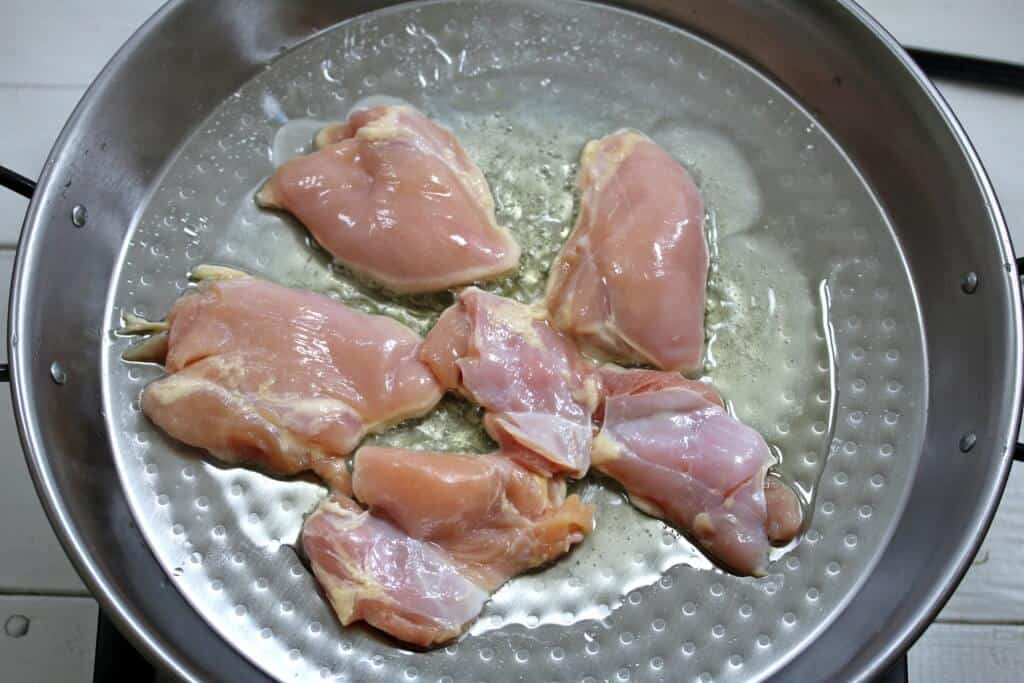
Transfer the chicken to a plate. Add the onions and garlic and cook until soft and translucent, 4-5 minutes.
Add the green beans and lima beans and cook for a couple of minutes.
Add the paella rice, stir and cook for another 3-4 minutes, adding a little more oil if needed. Add a little salt and pepper.
Position the beans the way you’d like them to appear in the final dish.
Pour the paella broth base into the pan.
Remember the cardinal rule: DO NOT STIR.
Once the mixture begins to bubble, position the chicken pieces in the pan.
Place the artichokes around the pan.
Place some strips of piquillo peppers on top.
Place some sprigs of rosemary on top.
Remember the idea is to position everything the way you want it to appear in the finished dish.
Simmer over medium-low heat for about 20 minutes or until the rice is done, rotating the pan as needed to cook the rice towards the outside of the rim. At the end of the cooking you can increase the heat for a few minutes to further caramelize the socarrat, the crispy golden-browned bottom.
Place the paella pan on the table and let the party begin!
Enjoy!
Save This Recipe
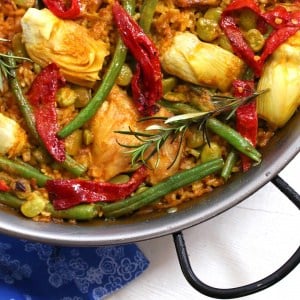
Valencian Paella
Ingredients
- 4 boneless chicken thighs
- 1 small yellow onion ,chopped
- 2 cloves garlic ,minced
- 6 ounces fresh uncooked green beans, washed and ends trimmed
- 3/4 cup frozen Lima beans
- 1 1/2 cups Matiz Paella Rice
- 3/4 teaspoons salt
- 1/4 teaspoon freshly ground black pepper
- 1 34 ounce carton Aneto Valencian Paella Cooking Base
- 7 ounce can plain artichoke hearts ,drained
- About 2 ounces Matiz Piquillo Peppers ,cut into strips
- A few small rosemary sprigs
- Smoked paprika for sprinkling
- Lemon wedges for serving
Instructions
- Heat the oil in the paella pan over medium heat, then add and brown the chicken pieces on both sides. Transfer the chicken to a plate.
- Add the onions and garlic and cook until soft and translucent, 4-5 minutes. Add the green beans and lima beans and cook for a couple of minutes. Lastly add the paella rice, stir and cook for another 3-4 minutes, adding a little more oil if needed. Add the salt and pepper.
- Position the beans the way you'd like them to appear in the final dish. Pour the paello broth into the pan. Remember the cardinal rule: DO NOT STIR. Once the mixture begins to bubble, position the chicken pieces in the pan followed by the artichokes and then top with the Piquillo peppers. Place some sprigs of rosemary on top.
- Simmer uncovered for about 20 minutes or until the rice is done, rotating the pan as needed to cook the rice towards the rim of the pan. At the end of the cooking you can increase the heat for a few minutes to further caramelize the socarrat, the crispy golden-browned bottom.
- Sprinkle with some smoked paprika and serve with lemon wedges.
Video
Notes
Nutrition
Photos courtesy David Iliff and Diego Delso via cc licensing

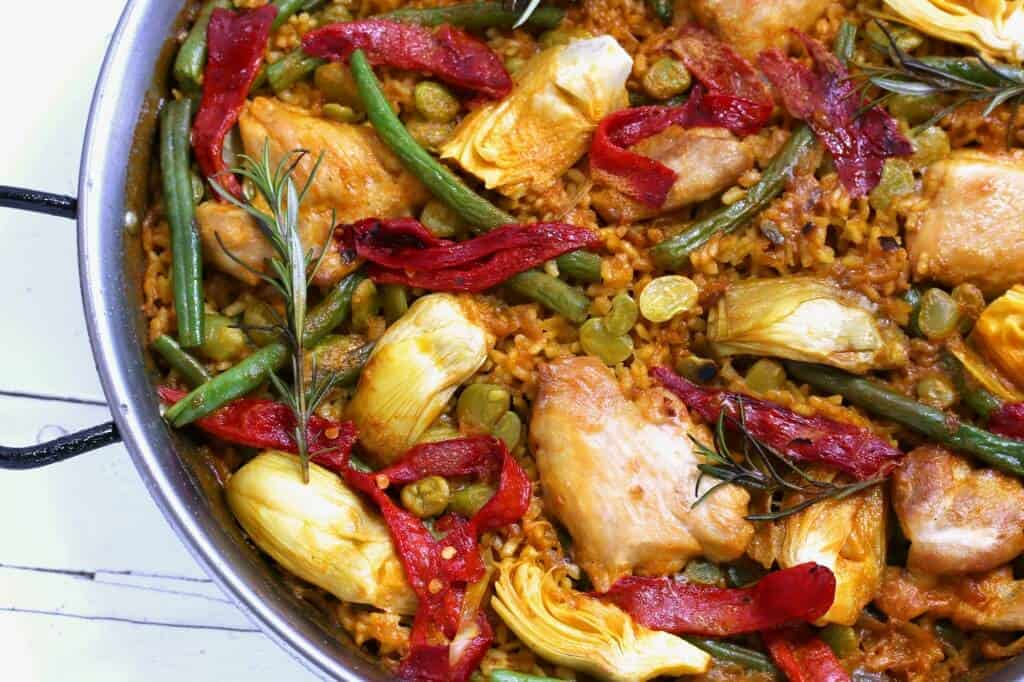
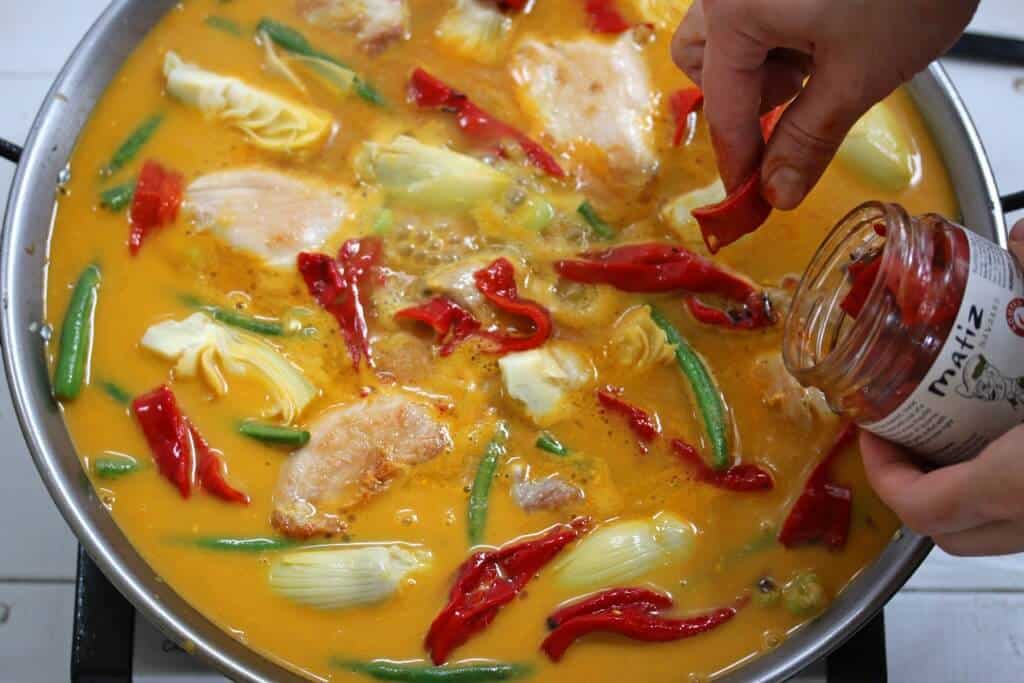
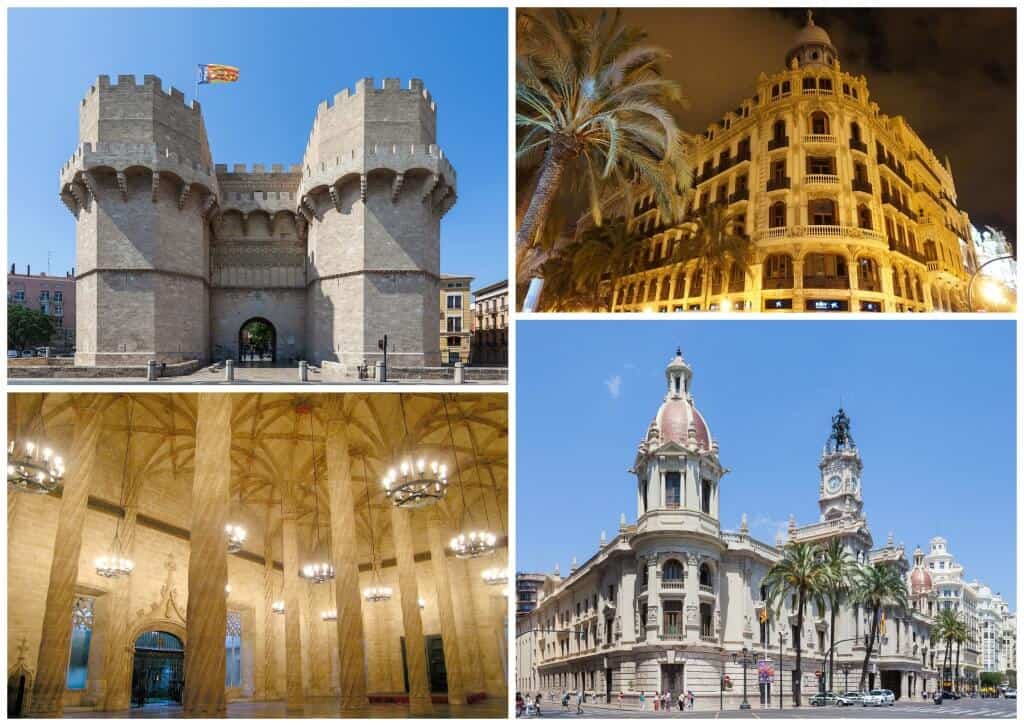

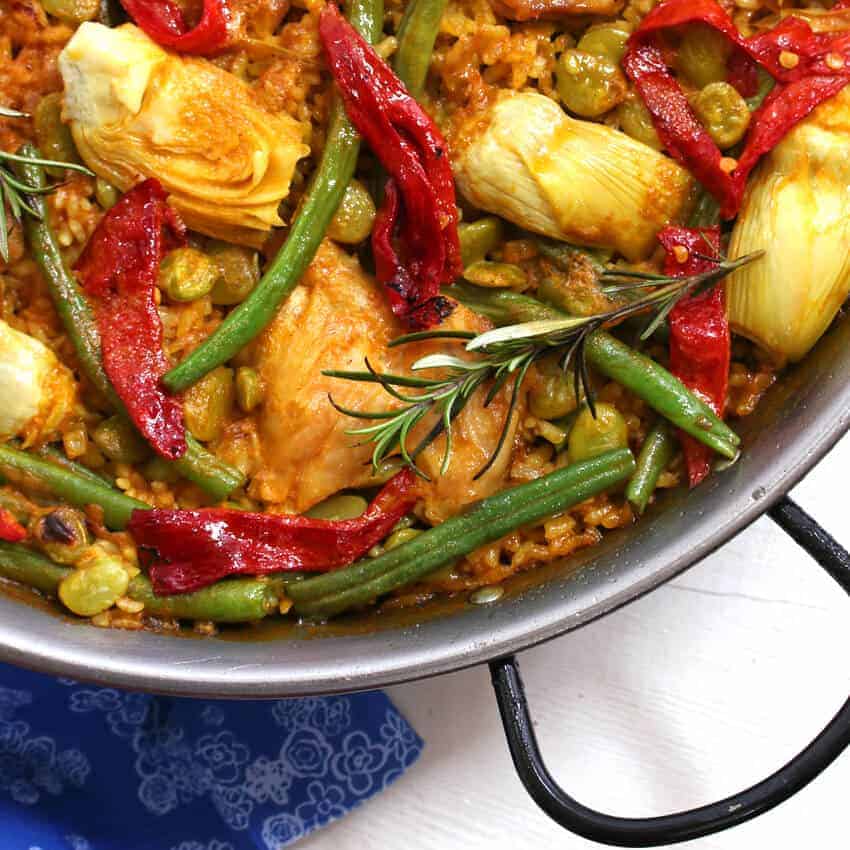
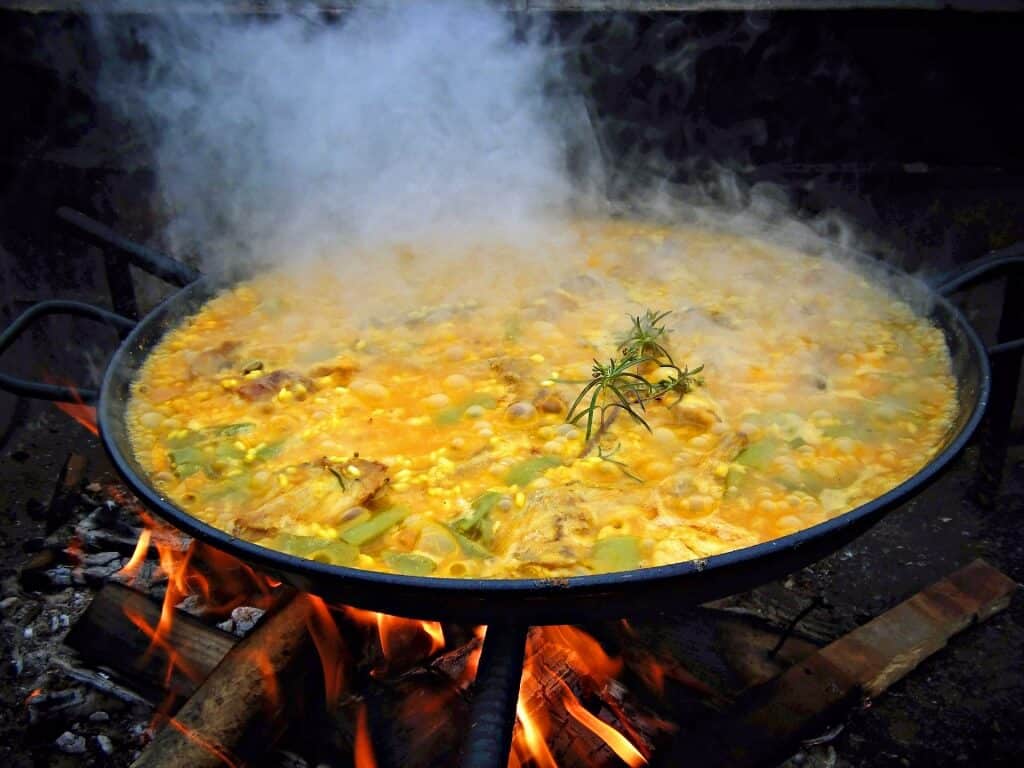
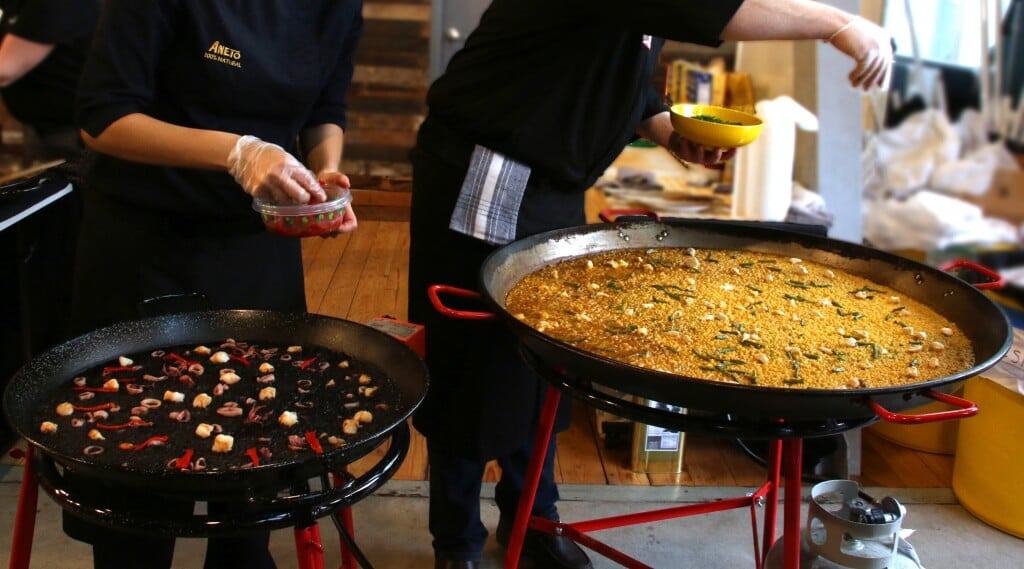
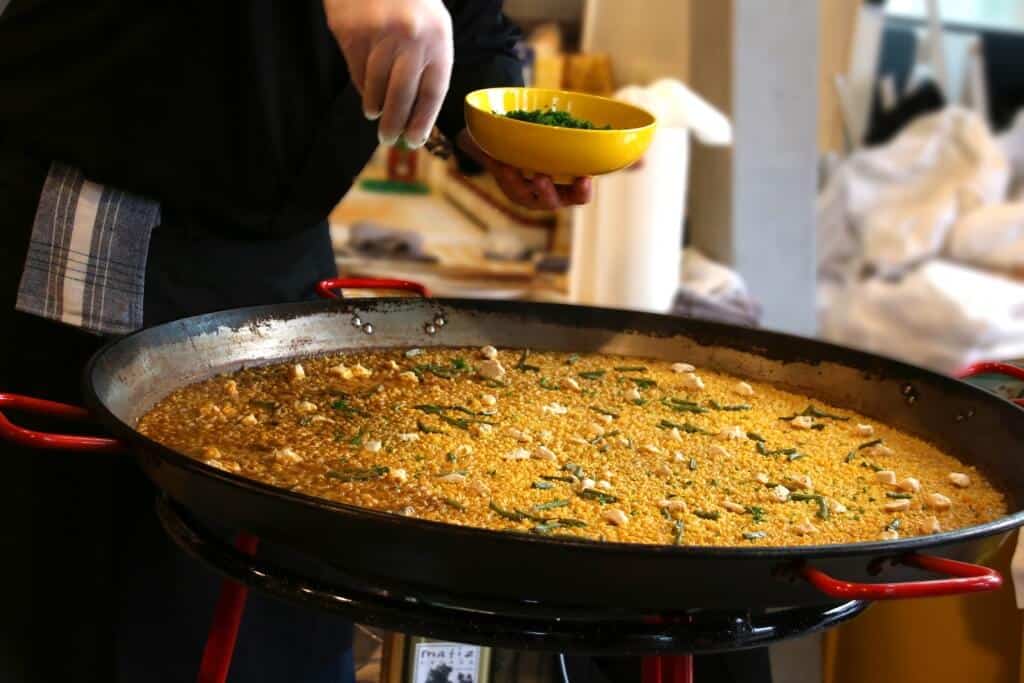
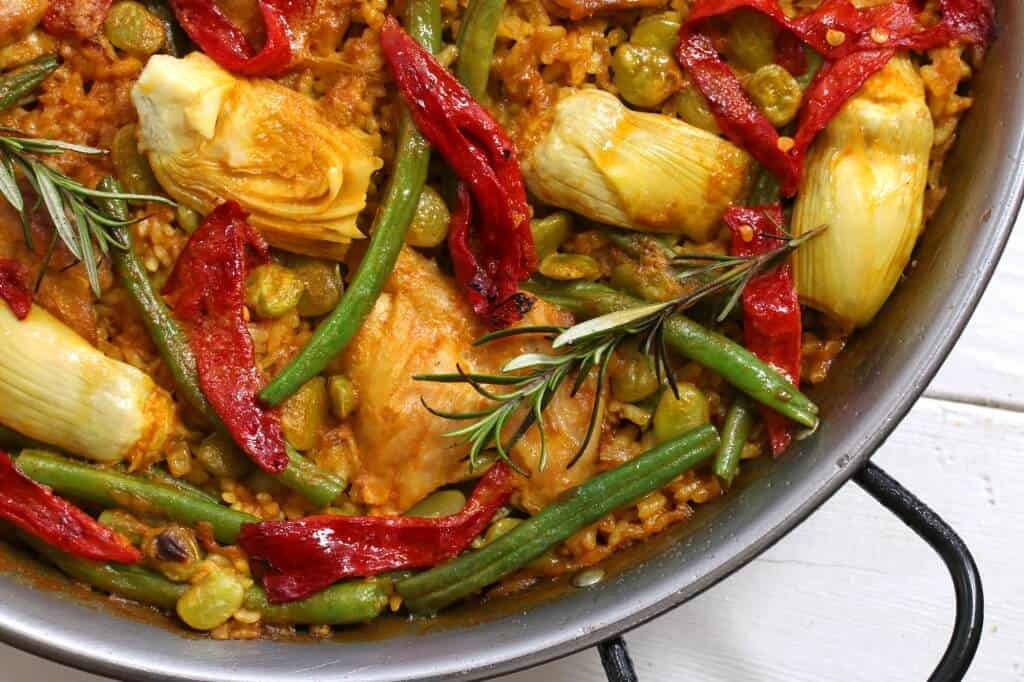
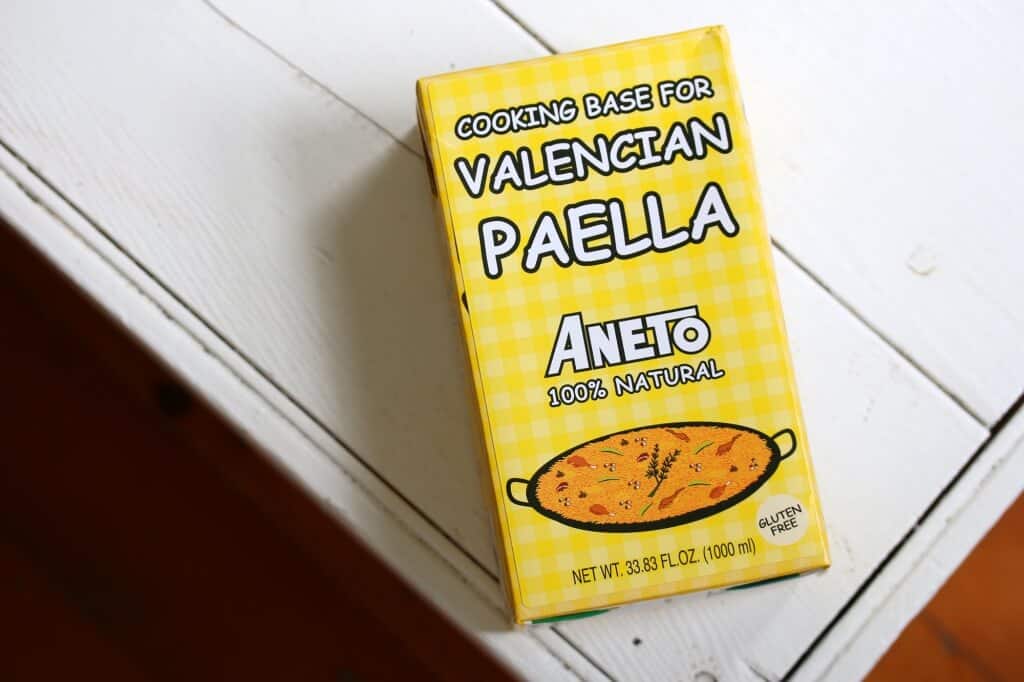
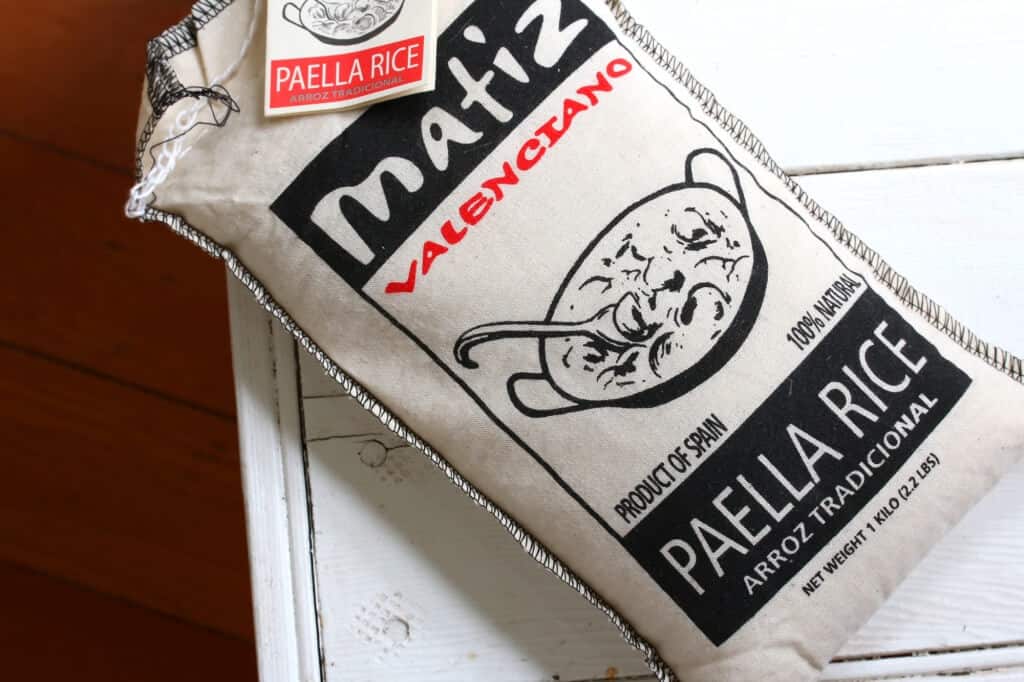
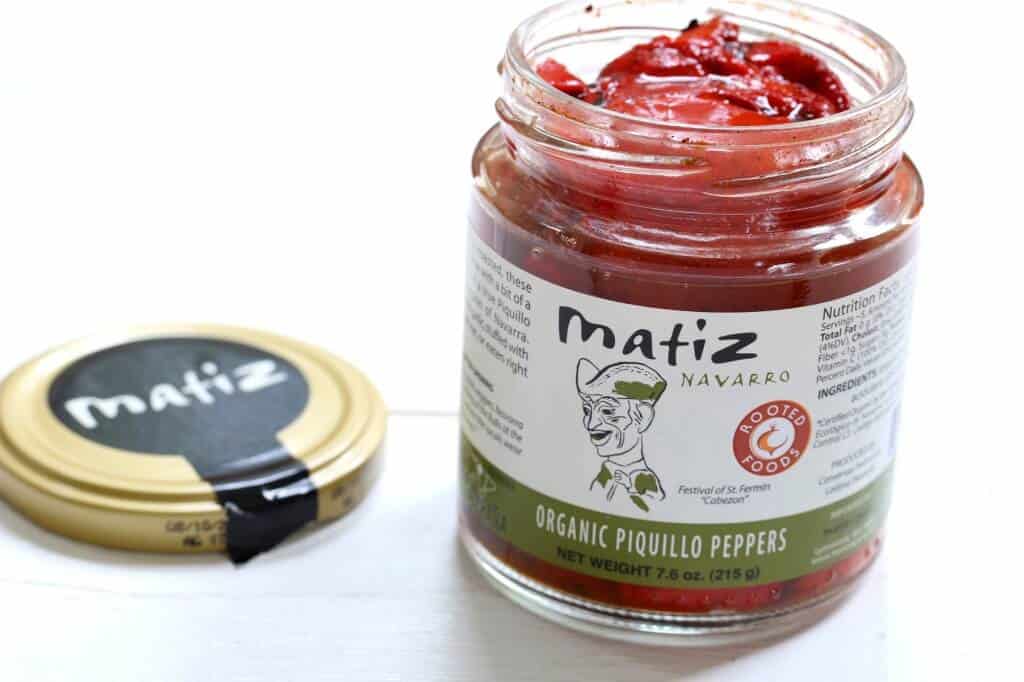
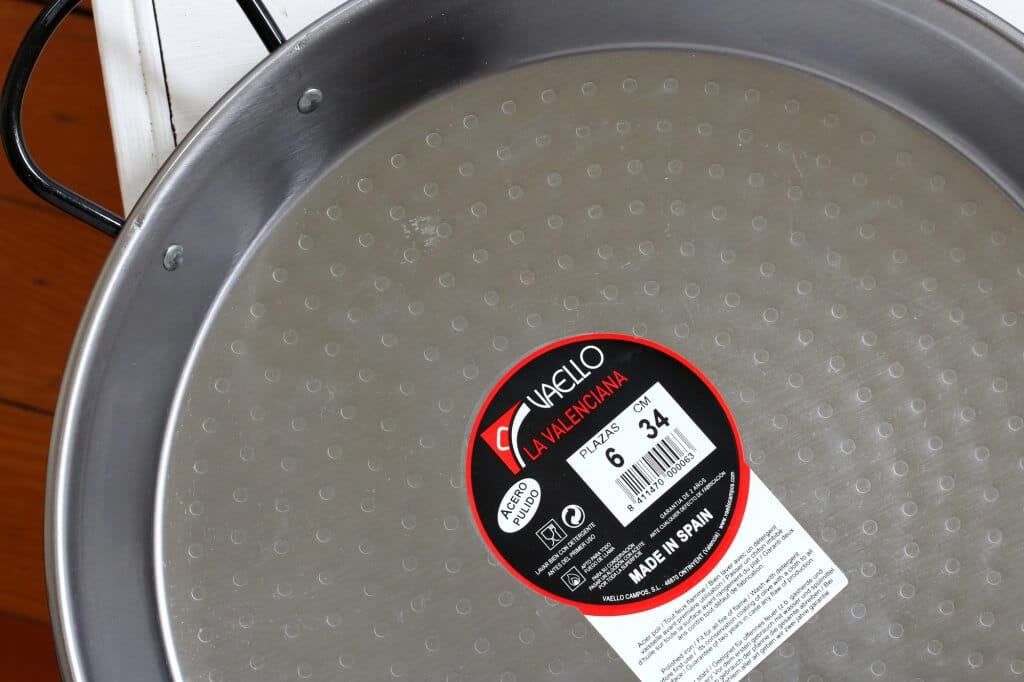
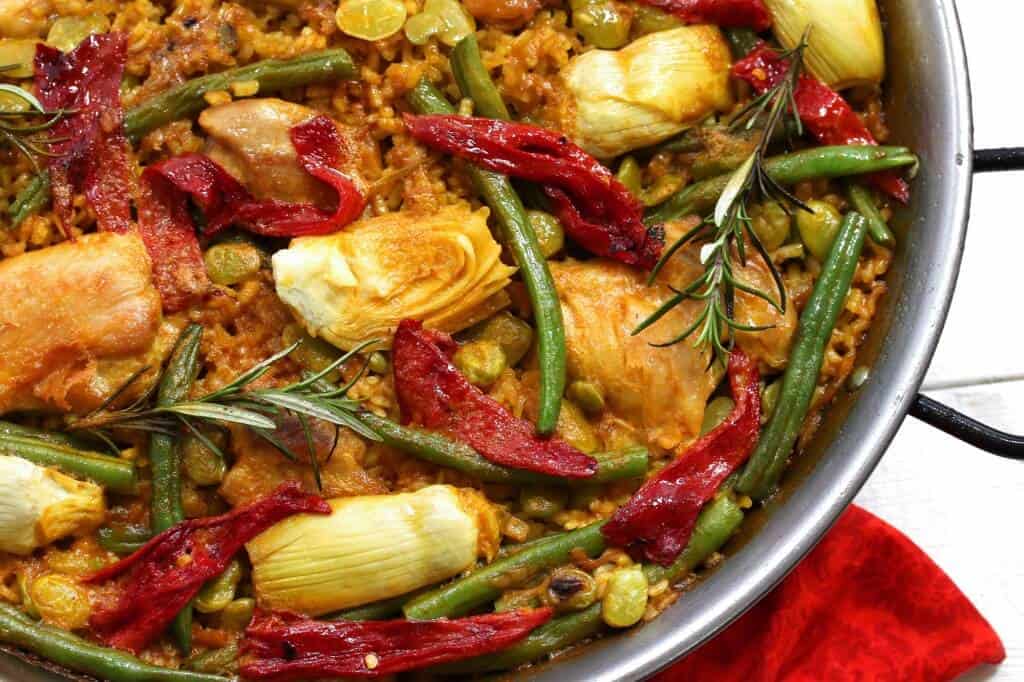
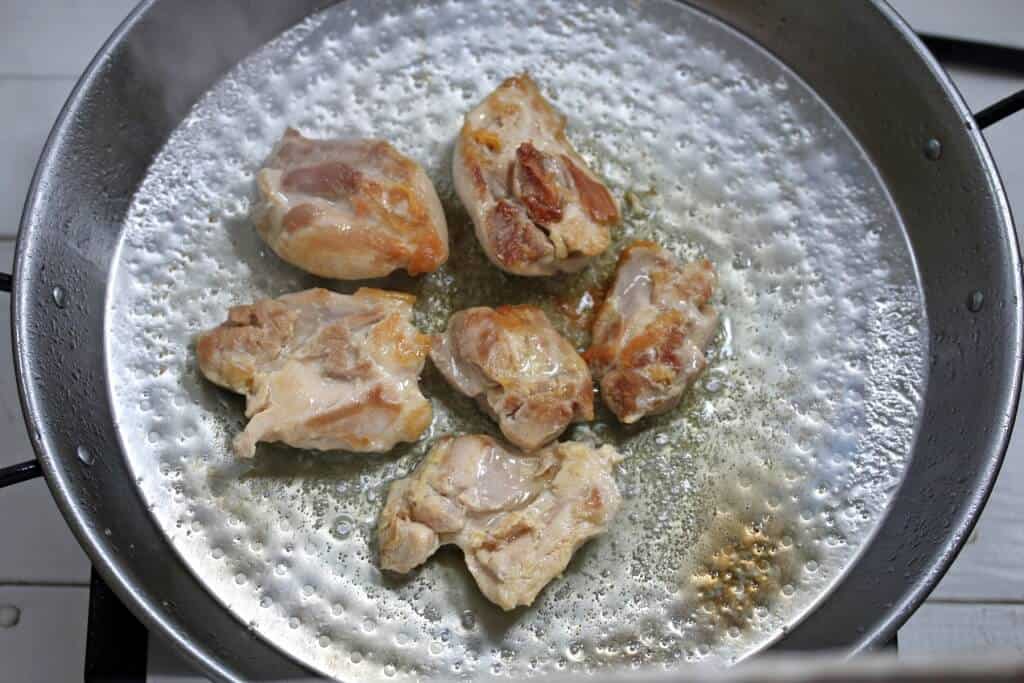
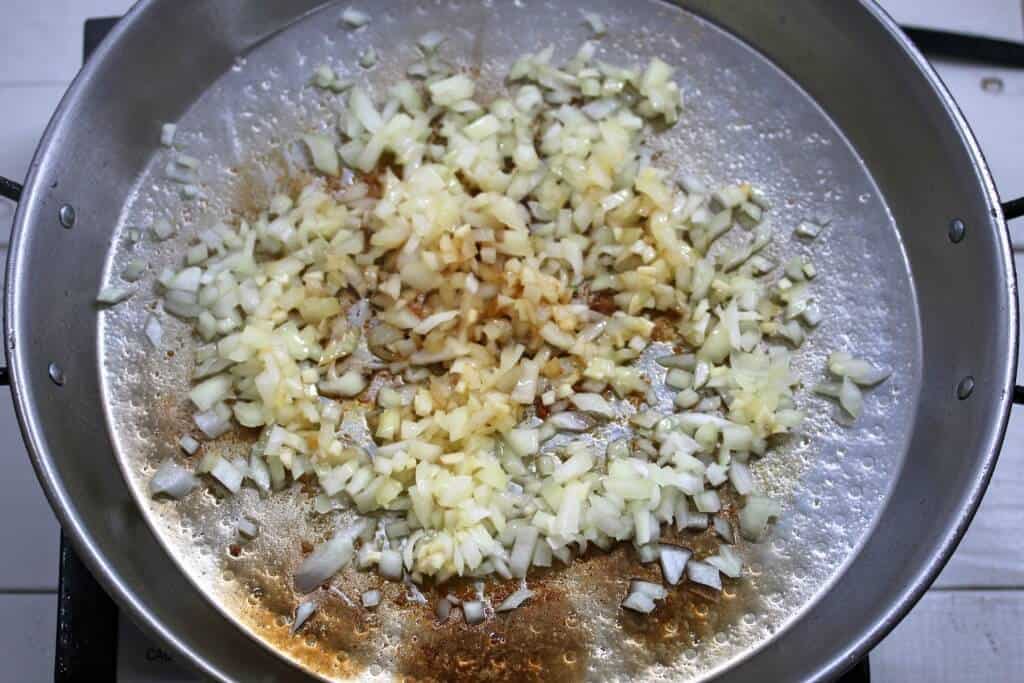
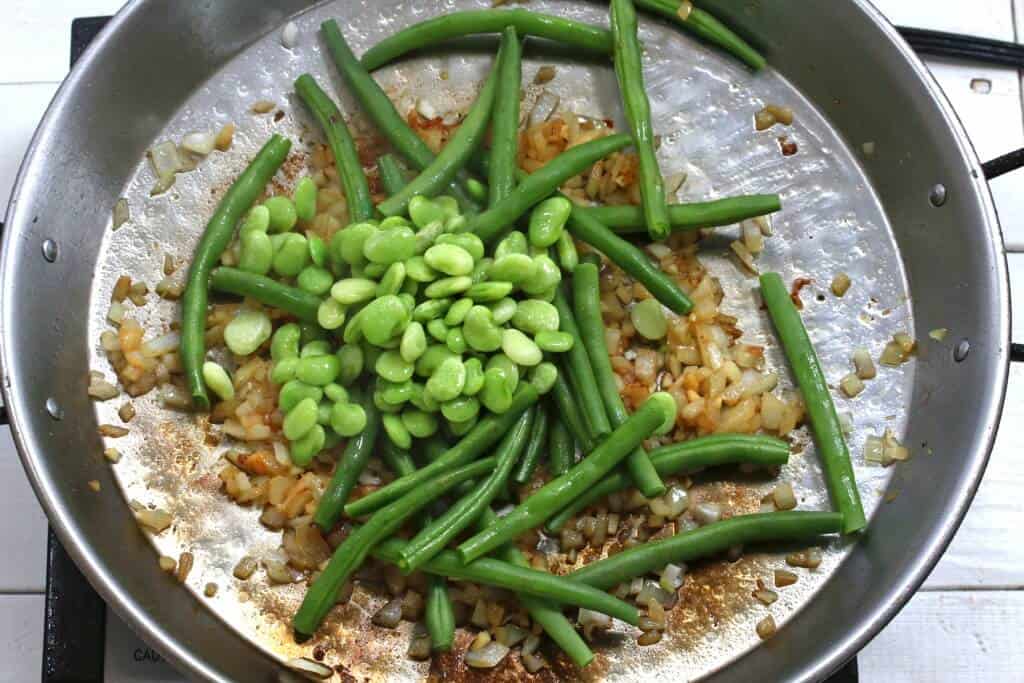
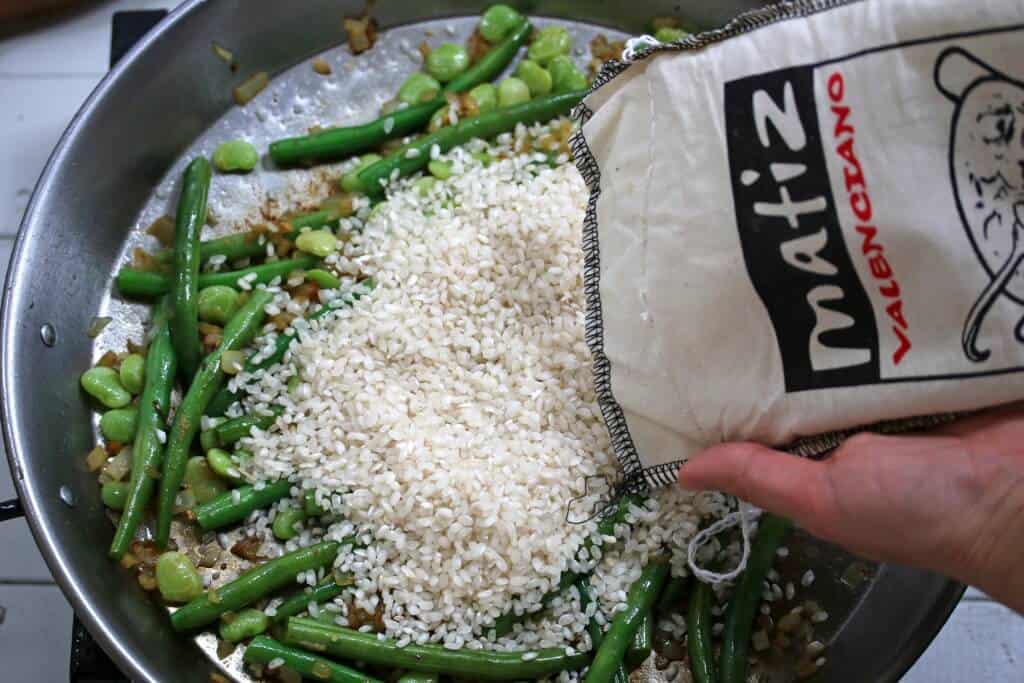
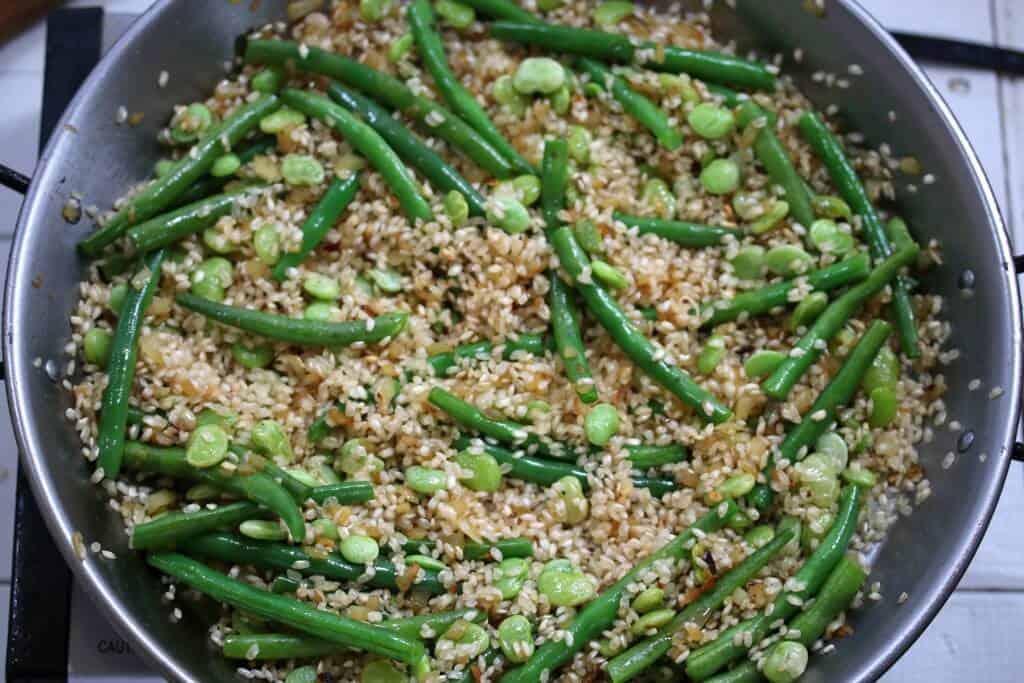
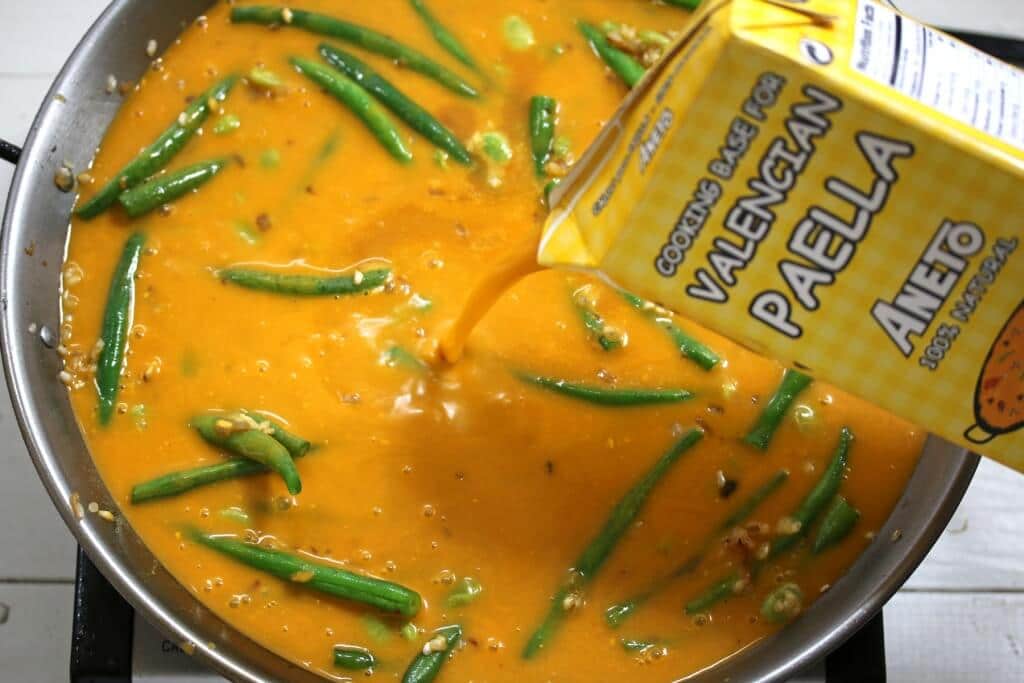
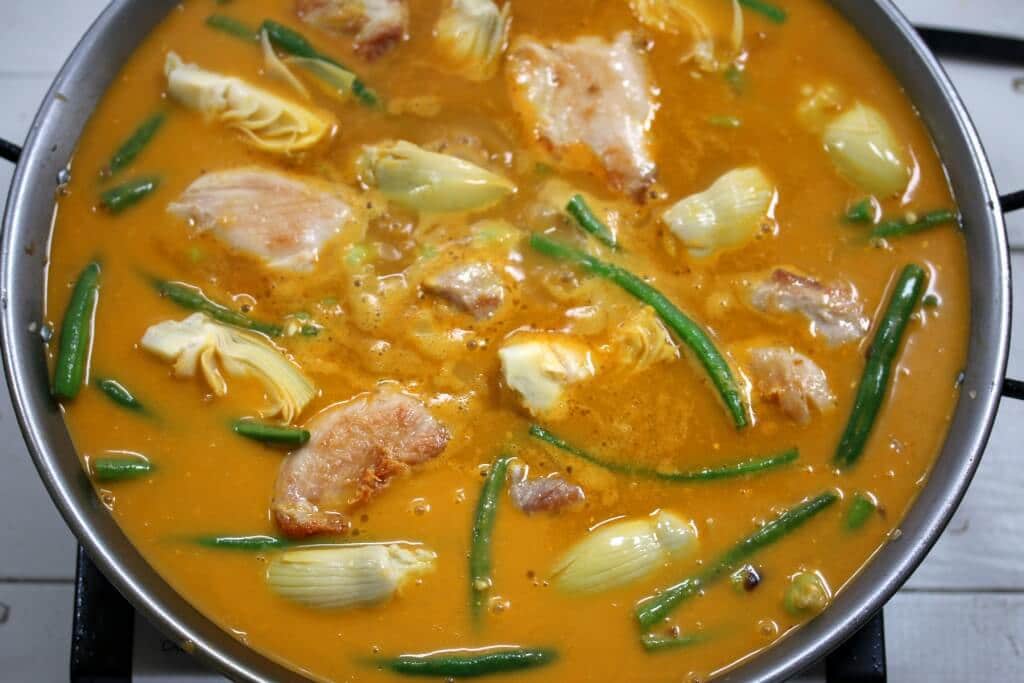
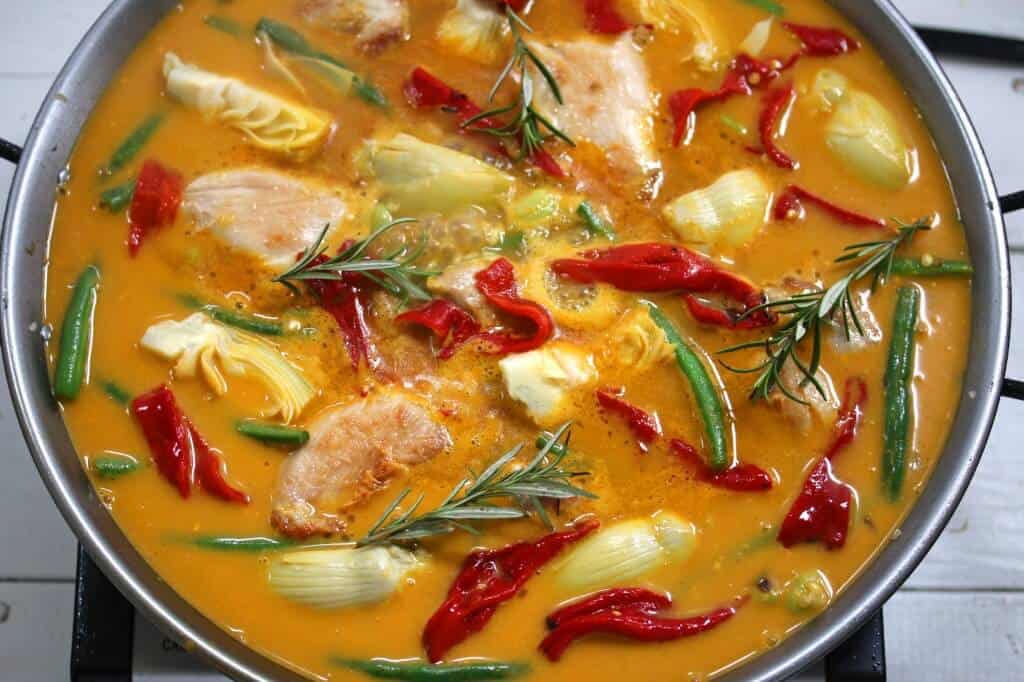
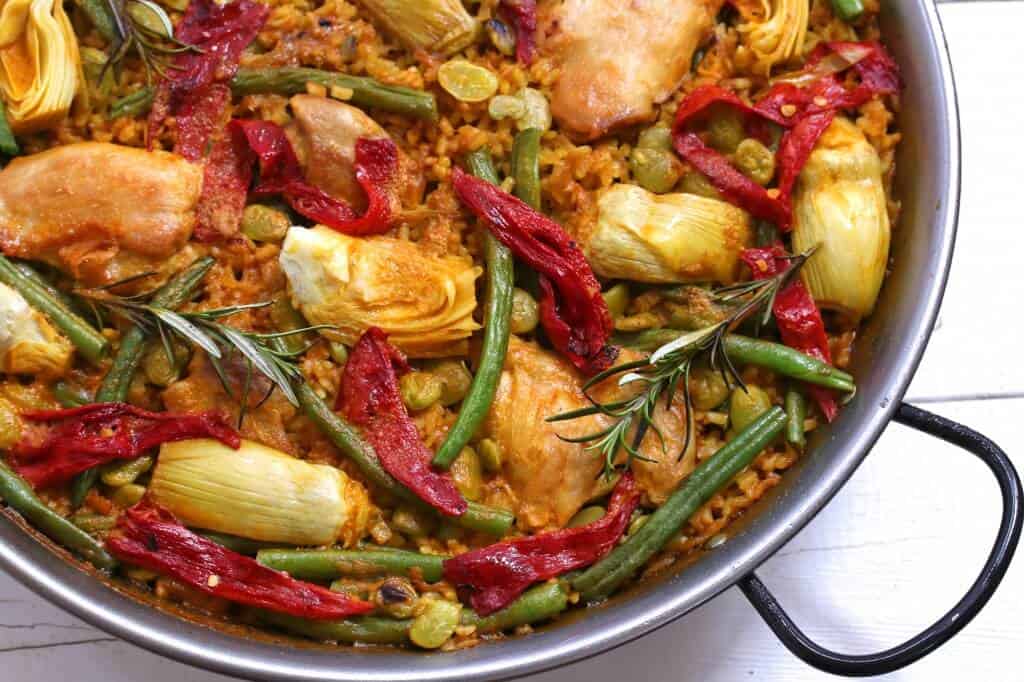


















I made your Paella Valenciana recipe tonight. It was delicious! This is the second time I’ve made a paella. The first time was years ago, and that turned out well, too. That time I made it a little differently with at least one different bean and my proteins were actual snails (no shells) and duck (I couldn’t get rabbit at the time. I don’t remember if that time I achieved a socarrat. This time it didn’t quite happen. Is there a way I might make it happen when reheating the leftovers? I’m going to refrigerate it overnight in the pan. I did not use an authentic paella pan, but used a 12″ fairly shallow stainless steel pan. Maybe if I add a bit of olive oil to the leftovers and then heat it on a medium-high temp then turn down the heat to low and cover it with foil for a bit to heat the rest? Only my husband and I ate it tonight.
I’m so glad you enjoyed it, Elaine, thank you! Yes, that’s probably the best way to see if you can get the crispy bottom on the leftovers.
Hi, I haven’t tried the recipe yet, but just came home from 4 weeks in Spain and wanted to recreate paella! We did not go to Valencia, but spent our time in Andalusia, where the paella is probably not as authentic, but I don’t think any of our paellas had any type of beans. Many North American recipes add green peas, which I know is not authentic. I’ll add garbanzo beans, because they served them often in Andalusia, and because I love them. I don’t have a paella pan, so I’ll use my well-seasoned cast iron fry pan, and I will try not to stir, but that will be difficult! Thanks so much for this recipe!
Hi Sandra, yes, you’ll see many variations across Spain. We covered 3000 miles on our last trip and everyone does it a little differently. This recipe presents a very traditional Valencian paella, minus the snails. Paella is a lot of fun to make and eat, I hope you enjoy it. And your choice to spend your time in Andalusia was a great one. We fell in love with southern Spain in particular.
Thanks, Kimberly. Great recipe and step by step instruction. I’ve been making paella for years, usually over a wood or charcoal fire, and am a bit of a perfectionist with technique and respect for tradition. But with all things adapted to a home kitchen I find a little ingenuity and “intelligent disobedience” may be in order. Most especially important is getting a uniform cooking across the pan on the small burners characteristic of American stoves. First, I support the pan on a wok ring (for indoor cooking I favor a 15 inch Pata Negra pan) – – the wok ring elevates the pan to receive a broader heat source for more uniform heating. Secondly, just before the rice is halfway done, I fold the rice from the edge of the pan to the center, and the rice from the center out to the edges . . . this may contradict the “no stir” policy, but results in more uniformly cooked rice while still allowing more than enough cooking time for a proper succarat to form. Hope others may find these indoor paella cooking tips helpful.
Hi Robert, I can definitely appreciate some “intelligent disobedience”, thanks for the tips!
Hello Kimberly, a wonderful chicken dinner recipe. I will share with my Facebook account. thank you.
The best mediterranean recipe!
This paella valenciana absolutely something new for me! Looks yummy! Thx for sharing recipe, I definitely add it to my cookbook!
It took me a few days to order all the ingredients but the wait was well worth it! This paella is EXCELLENT! No need to look any further for recipes, this one hit the jackpot. Looking forward to trying your seafood paella next (already have the Aneto broth). Thanks, Kimberly!
Wonderful, Tim, I’m so happy to hear that, thank you! I’m confident you’re going to love the seafood paella too. Aneto’s broths are amazing!
Definitely your paella valenciana is awesomeness! This is a great recipe Kimberly, as you know I made it a short while ago and it was lovely, in fact have made it again since. Thx for sharing recipe, i definitely add it to my cookbook!
Thanks so much, Jill!
Even heat is crucial. Another sin often committed is the covering the dish with foil. The rice needs to cook in the broth not steam in the vapors.
Definitely, Jeremy. Also, rotating the pan helps ensure an even crust on the bottom. Tin foil: That’s generally just done for seafood paella at the very end so that the clams and mussels can steam and open up.